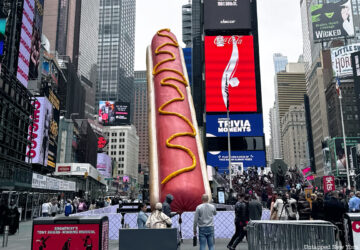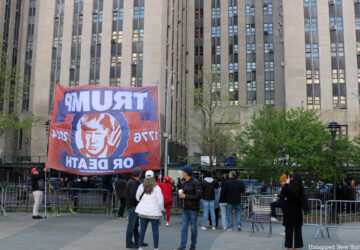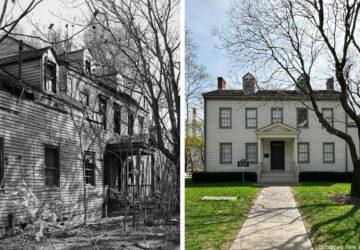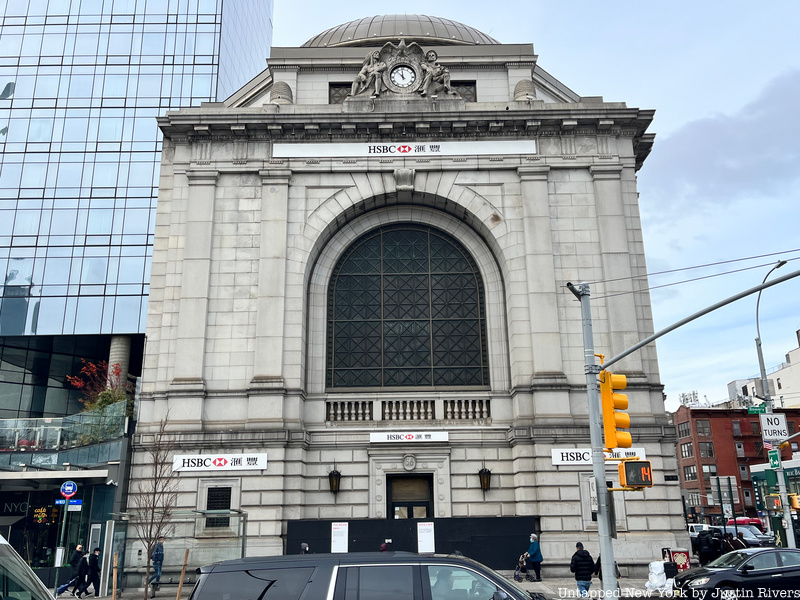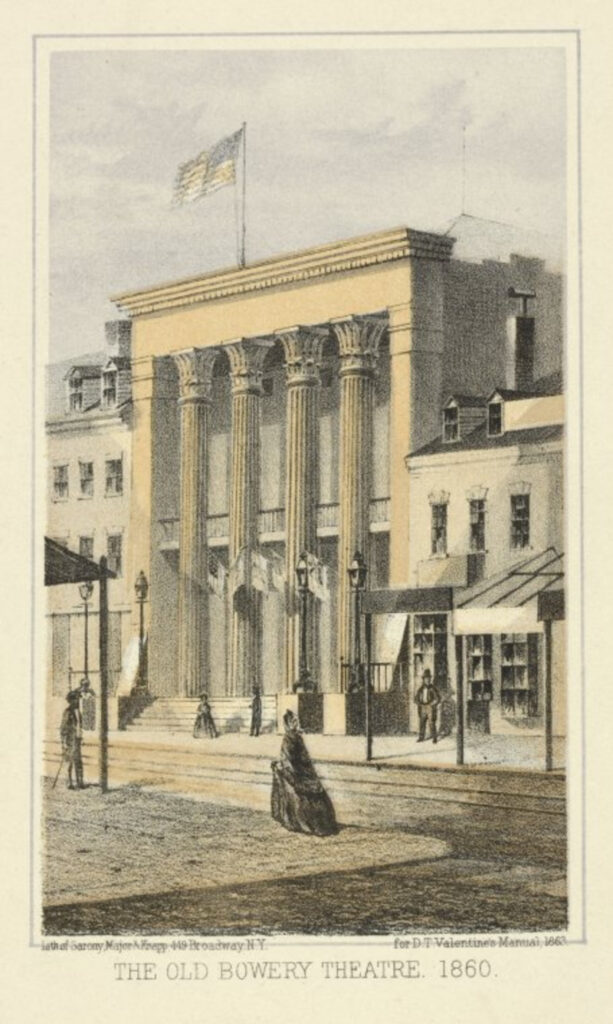The Bowery, New York City’s oldest thoroughfare, was the epicenter of working-class entertainment in the mid-19th century. After long hard days of work, men and women would flock to theaters and taverns along the street to enjoy their leisure time, watching spectacular shows of equestrian tricks, dramatic plays, and circus acts. Of all the theaters along the Bowery offering such spectacles, there was none more grand than the Bowery Theatre.
Uncover more fascinating stories of the lost, and extant, historic buildings on the Bowery on our upcoming Secrets of the Bowery Walking Tour on December 22nd! This tour is just $5 for Untapped New York Insiders. Not an insider yet? Use code JOINUS when you become a member today and get your first month free!
Known by many names throughout its 100+ year history, the Bowery Theatre was originally constructed in 1826 and opened as New York Theatre. Designed by Ithiel Town, it resembled a Greek Temple from the outside with towering faux-marble columns. Located at today’s 46-48 Bowery on Manhattan’s Lower East Side on the former site of the Bull’s Head Tavern, it held over 3,000 seats, making it the largest in the country at the time. In Gotham: A History of New York City to 1898, the authors describe the theater’s “sumptuous crimson curtains” and shimmering gold-painted boxes illuminated by gas-powered globes. It was the first theater in the country to have such lights.
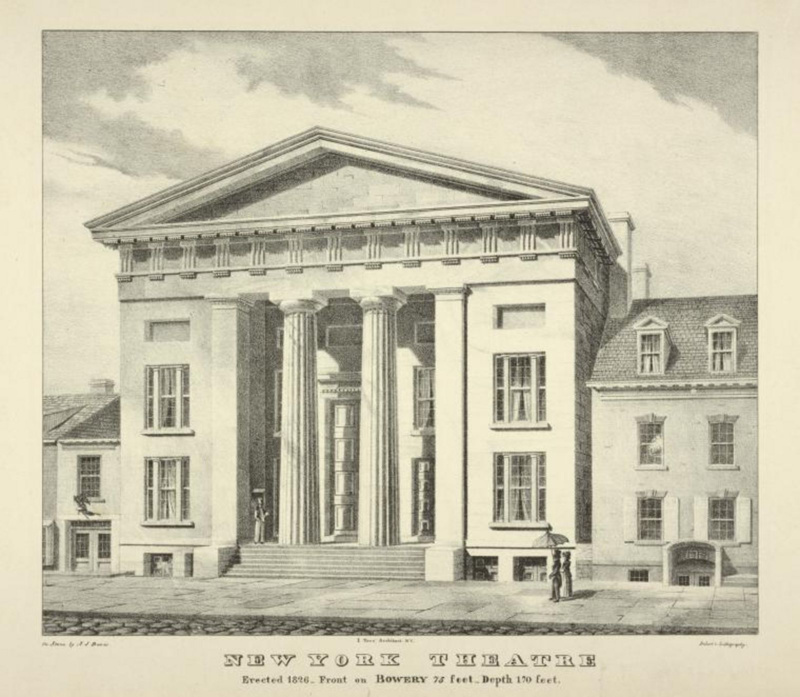
The opulent design and grandness of the theater appealed to upper-class patrons and put it in league with such upscale venues as The Park Theatre. To further attract well-to-do clientele, manager Charles Gilfert put on high-brow Shakespearean plays and European operas and ballets. These types of shows, however, did not pack the (very large) house.
Nearby circus theaters, like The Lafayette, offered spectacular shows that appealed to the working-class people of the surrounding neighborhood. Soon, Gilfert decided to shake up the programming at the New York. He introduced equestrian acts, aquatic displays, and melodramas packed with action and special effects to draw large crowds. He also won over the stage star Edwin Forrest, a Manhattan-born Shakespearean actor whose rival with British actor William Macready would later spark the Astor Place Riot.
After Gilfert died in 1829, Thomas Hamblin took over the management of the theater. The theater suffered the first of multiple fires it would sustain throughout its 100+ year history in 1830. The building was redesigned by architect Joseph Sera and officially named Bowery Theatre once reconstructed.
Under Hamblin’s direction, the theater continued to cater to local working-class and immigrant patrons. Hamblin steered the Bowery – renamed The American Theatre – further away from previous competitors, like The Park, which promoted European art and players. Instead, Hamblin booked unknown and famous American performers. Stars of the 19th century including Buffalo Bill, Dan Rice, and Charlotte Cushman all graced the stage. African-American performers also frequently appeared on stage at the Bowery Theatre. William Henry Lane, also known as Master Juba, started his career there and came to be known as the father of tap dance.
Despite showcasing Black performers and a play version of Uncle Tom’s Cabin, the Bowery was also a popular place to see minstrel shows. T.D. Rice, largely credited with popularizing minstrelry, often performed his “Jump Jim Crow” act at the theater and appeared as the title character in Uncle Tom’s Cabin in blackface.
The Bowery was one of the most popular theaters in New York City by the 1830s, but tragedy was just around the corner. A fire burned down the theater in 1836 and again in 1838. After rebuilding, Hamblin continued to make the performances even bigger and more exciting with pyrotechnics, large casts, and elaborate costumes. In 1845, the theater burnt down for the fourth time.
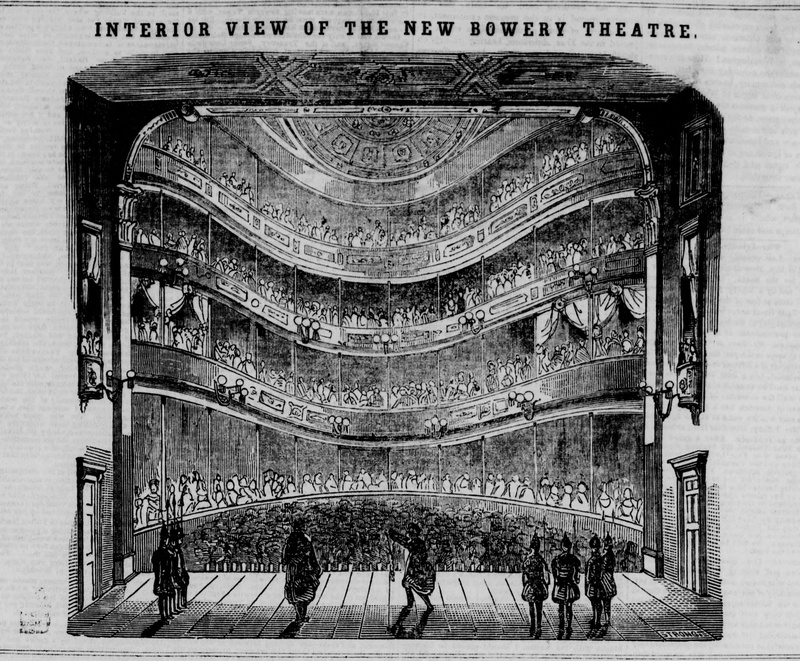
The New Bowery Theatre that rose from the ashes was designed by John M. Trimble and managed by A. W. Jackson. Throughout the rest of the 19th century, theater programming catered to the tastes of the evolving immigrant population. In 1879 the theater took on a new name, Thalia Theatre, and played largely German shows. Later it became a Yiddish theatre, then an Italian vaudeville theater. In 1929, the theatre was operating as Fay’s Bowery Theatre under Chinese ownership. It was in that year that the final fire struck and the theater burned down for the last time.
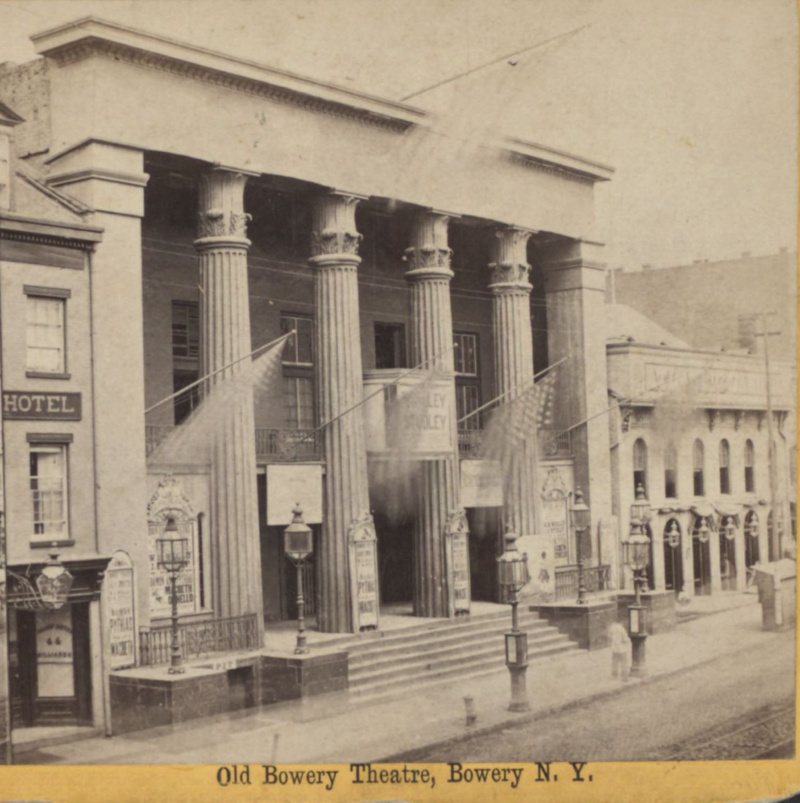
Today, a modern glass covered building stands at the former site of the theater. On one side of the site there remain some of the oldest buildings along the thoroughfare and on the other the historic Citizens Savings Bank building. At these sites and many others along the Bowery, you’ll see a “Windows on the Bowery” poster which gives a glimpse into the Bowery’s history. These posters, created by The Bowery Alliance, have recently been compiled into a book, Windows on the owery: 400 Years on NYC’s Oldest Street, which you can purchase on their website.
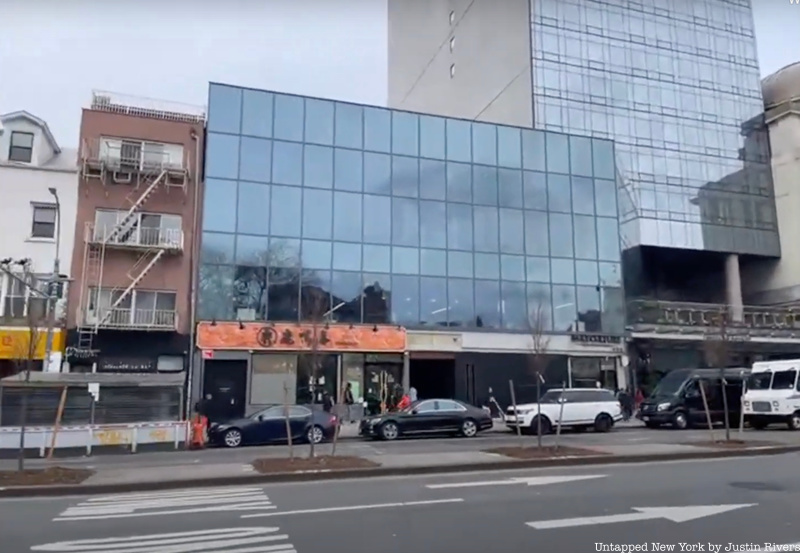
Learn more about the fascinating history of the Bowery on our upcoming tour with Untapped New York Insiders!
Next, check out 15 Lost Theaters of Manhattan
